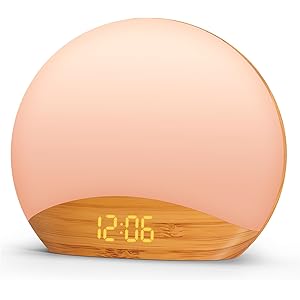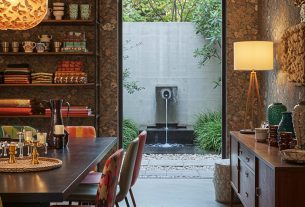As an interior designer, I’ve had the privilege of working with diverse clients, each bringing their unique challenges and aspirations. However, my journey into designing spaces for autistic adults has profoundly shaped my understanding of how our environments can impact our well-being. In this article, I aim to share insights that will help you transform spaces, making them not only functional but also inspiring and comforting for autistic adults.
Understanding Autism and Its Connection to Space
Autism Spectrum Disorder (ASD) encompasses a wide range of experiences and needs. According to the CDC, approximately 1 in 44 children is diagnosed with autism, and many of these individuals transition into adulthood. This means that the design of their living spaces can significantly influence their quality of life.
Many autistic adults may be sensitive to sensory stimuli, which affects how they interact with their immediate environment. Understanding these sensitivities is crucial in creating spaces that promote comfort and creativity. Here are the key areas to consider:
- Sensory Sensitivities
- Social Interaction Needs
- Routine and Predictability
- Personal Space and Privacy
Designing for Sensory Sensitivities
One of the most important aspects of interior design for autistic adults is addressing sensory sensitivities. Many individuals with autism may have heightened reactions to light, sound, and texture. Here are some strategies to create a sensory-friendly environment:
Lighting
Bright, harsh lighting can be overwhelming. Instead, consider:
- Natural lighting through large windows or skylights
- Adjustable lighting options, like dimmers or lamps with soft bulbs
- Layered lighting to create a calming atmosphere
Soundproofing
Noise can be a significant source of stress. Implementing soundproofing techniques can greatly enhance comfort:
- Thick carpets and rugs to absorb sound
- Acoustic panels on walls
- Soundproof windows
Textures
Textural sensitivity varies widely among individuals. Here are some ideas for incorporating different textures:
- Soft furnishings like cushions and throws
- Natural materials such as wood and bamboo
- Fabrics that are gentle on the skin, like cotton and linen
Creating Spaces for Social Interaction
While some autistic adults may prefer solitude, others thrive in social settings. Designing spaces that accommodate both preferences is essential. Consider the following:
Flexible Layouts
Open floor plans can facilitate social interaction without feeling crowded. Here are layout options to consider:
- Modular furniture that can be easily rearranged
- Defined areas for different activities, such as reading, crafting, or socializing
- Outdoor spaces for gatherings
Comfortable Gathering Spaces
Creating cozy nooks or communal areas can enhance social interaction:
- Soft seating arrangements with ample cushions
- Low coffee tables for easy access
- Incorporating plants to create a welcoming atmosphere
Establishing Routine and Predictability
Many autistic adults find comfort in routines. Interior design can facilitate this need by creating predictable environments:
Zoning
Creating distinct zones for various activities can help establish a routine:
- A dedicated workspace for productivity
- A relaxation area with calming colors and textures
- A space for socialization or hobbies
Visual Cues
Incorporating visual aids can help reinforce routines:
- Color-coded areas for different activities
- Timelines or schedules displayed in common areas
- Labels for storage areas to promote organization
Prioritizing Personal Space and Privacy
Personal space is crucial for autonomy and comfort. Here’s how to create spaces that respect privacy:
Defined Personal Areas
Designing individual spaces is vital:
- Private bedrooms with soundproofing
- Reading nooks or meditative spaces
- Flexible room dividers for shared spaces
Accessibility
Ensuring that personal spaces are easily accessible can empower autonomy:
- Designing spaces that are wheelchair-friendly if needed
- Incorporating adjustable furniture to suit individual needs
- Smart home technology for ease of use
Case Studies: Successful Transformations
To illustrate the impact of thoughtful interior design, let me share a couple of case studies:
Case Study 1: The Artsy Retreat
A young autistic adult named Sam wanted a space that reflected his love for art while providing a calming environment. By incorporating:
- A dedicated art studio with natural light and adjustable lighting
- Soft, neutral colors to reduce visual overstimulation
- Soundproofing materials to allow him to focus
We transformed his home into an inspiring retreat that nurtures his creativity and provides him with a peaceful sanctuary.
Case Study 2: The Social Hub
In another project, I worked with a family who wanted to create a social hub for their autistic son, who enjoyed hosting friends. We achieved this by:
- Designing an open-plan living space with modular furniture
- Incorporating vibrant colors to evoke energy
- Creating a cozy outdoor area for gatherings
This transformation not only met his needs but also encouraged social interaction and connection with friends.
Integrating Technology for Enhanced Living
As we dive deeper into the realm of interior design, it’s essential to consider the role of technology. Smart home systems can significantly enhance comfort and accessibility for autistic adults:
- Smart lighting that adjusts based on mood
- Voice-activated assistants to control the environment
- Apps for task scheduling and reminders
Statistics That Matter
Understanding the impact of well-designed spaces on autistic individuals is backed by research. A study published in the Journal of Environmental Psychology found that:
- Comfortable environments reduce anxiety by up to 30%
- Thoughtfully designed spaces can improve focus and productivity by 25%
- Natural elements in design can enhance overall well-being
Tips for DIY Interior Design for Autistic Adults
If you’re looking to implement these ideas yourself, here are some practical tips:
- Start with a clear understanding of individual needs and preferences
- Incorporate calming colors and textures
- Utilize modular furniture for flexibility
- Pay attention to lighting and soundproofing options
Conclusion: Creating Inspiring Spaces
Designing spaces for autistic adults is not just about aesthetics; it’s about creating environments that foster comfort, creativity, and well-being. By understanding the unique needs of autistic individuals and implementing thoughtful design strategies, we can transform homes into sanctuaries that inspire and uplift.
As we conclude, remember that each individual is unique, and what works for one person may not work for another. Always engage with the individual to understand their preferences and needs. Together, we can create spaces that not only look good but also feel good.
Frequently Asked Questions
1. How can I determine the specific needs of an autistic adult?
Engage in open conversations with the individual, observe their preferences, and consider their sensory sensitivities.
2. What are some low-budget options for creating sensory-friendly spaces?
Use soft furnishings, adjust lighting with inexpensive lamps, and rearrange existing furniture to create designated areas.
3. Can technology help improve the quality of life for autistic adults?
Absolutely! Smart home technology can enhance accessibility and provide customized settings that cater to individual needs.
If you found this article helpful, I encourage you to share it with friends and on social media. Don’t forget to sign up for our newsletter for more insights on interior design and creating inspiring spaces. Together, let’s make a difference, one room at a time!
REACHER Wood Grain Sunrise Alarm Clock and Sound Machine Nightlight, Digital Dimmable Clock for Bedroom, 26 Sleep Sounds, White Noise Machine for Baby, Adults, Wake Up Light Alarm Clock for Kids
$33.24 (as of 27/03/2025 01:22 GMT -03:00 - More infoProduct prices and availability are accurate as of the date/time indicated and are subject to change. Any price and availability information displayed on [relevant Amazon Site(s), as applicable] at the time of purchase will apply to the purchase of this product.)
Sign up for our newsletter and stay up to date with exclusive news
that can transform your routine!




